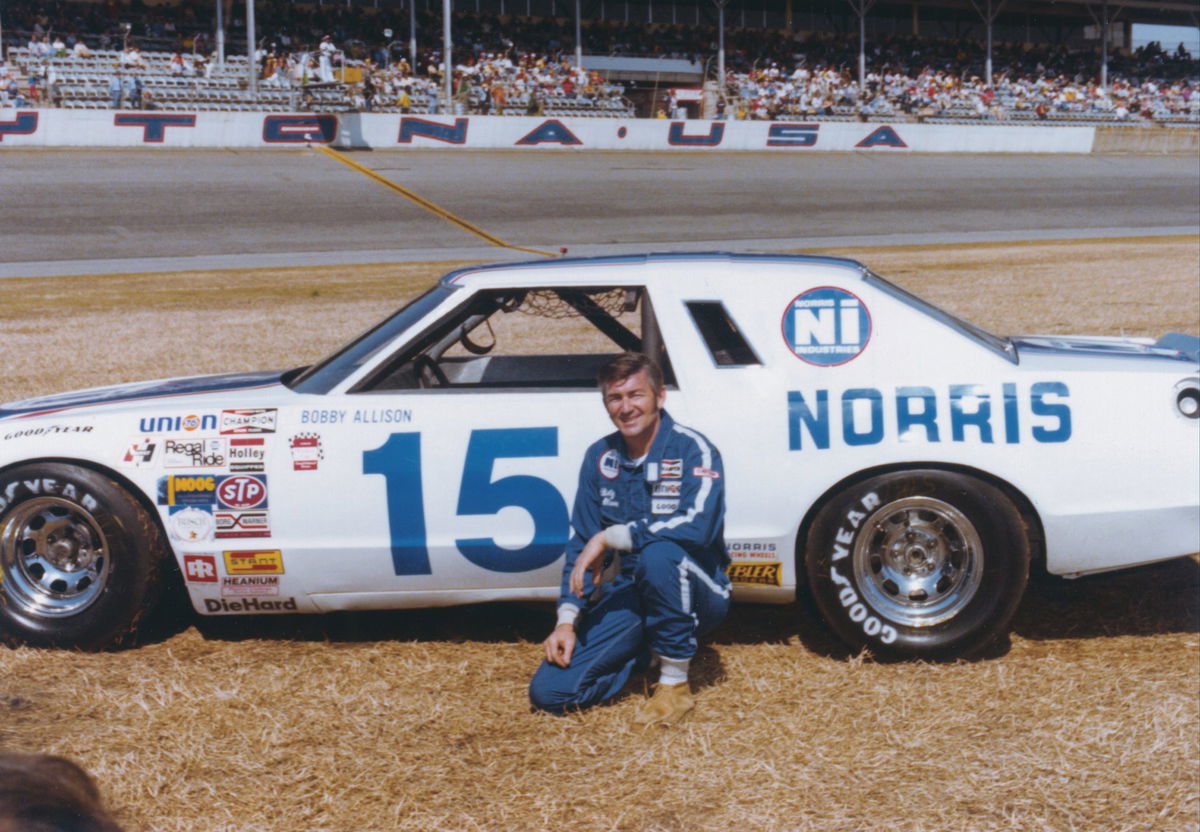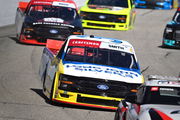
Getty
DAYTONA BEACH, FL – FEBRUARY 19: Bobby Allison driver of the #15 Ford poses on the infield grass before winning the 1978 NASCAR Winston Cup Daytona 500 at the Daytona International Speedway on February 19, 1978 in Daytona Beach, Florida. (Photo by ISC Archives/CQ-Roll Call Group via Getty Images)

Getty
DAYTONA BEACH, FL – FEBRUARY 19: Bobby Allison driver of the #15 Ford poses on the infield grass before winning the 1978 NASCAR Winston Cup Daytona 500 at the Daytona International Speedway on February 19, 1978 in Daytona Beach, Florida. (Photo by ISC Archives/CQ-Roll Call Group via Getty Images)
The harrowing memories of the 2001 Daytona crash are clearly etched in the minds of the NASCAR community. The incident prompted the authorities to return to their drawing board and modify the safety structures of the stock cars and the other paraphernalia, in order to ensure that no more casualties occurred on the track. However, this instance also underpinned how daunting can it be to navigate the way on the tracks of superspeedways.
Watch What’s Trending Now!
Moreover, this was not the first incident that sent chills down the spine of the audience and compelled NASCAR to introduce more advanced structures in the cars as well as the infrastructure of the venues, to make it more conducive to racing. One such incident that transformed the sport once and for all was the Talladega crash of Bobby Allison back in 1987.
ADVERTISEMENT
Memories of 1987’s Talladega crash that transformed NASCAR forever
The track of Talladega has occupied a coveted position in the hearts of every NASCAR fan for the unexpected turn of events. Moreover, this track has also been the breeding ground of urban myths owing to the carousel of mishaps that have occurred on the track since its inception.
However, it was the near-fatal crash of Bobby Allison in the 1987 Winston 500 that not only endangered the life of the flagman in the stands but also the spectators present in the grandstands watching the race unfold bit by bit. While Kyle Larson being T-boned by Ryan Preece had traumatized the NASCAR fandom, Bobby Allison’s Talladega crash after a tire blowout witnessed the introduction of restrictor plates for the first time in the world of NASCAR.
The fateful incident occurred at Lap 22 of the race, while Bobby Allison took the lead of the race. Allison’s Buick lost an engine that resulted in the cutting of his rear tire and sent him spinning on the track. As the car careened towards the fence after being airborne at a speed of 190mph, the 100ft metal mesh collapsed, unable to bear the high impact. Moreover, a few of the fans present sustained minor injuries and were carried away in stretchers.
ADVERTISEMENT
The broadcaster was heard saying, “He has torn out a whole large area of guardrail, protecting the crowd from the racetrack and he came very close to going into the stands. The car became airborne and went flying into that wall and catch fencing but fortunately, it did stay onto the racetrack.”
ADVERTISEMENT
Watch this Story: Hailie Deegan’s NASCAR Journey: a Tale of Triumph and Tribulation
ADVERTISEMENT
Top Stories
Greg Biffle’s $4M Prized Possession Goes Up for Sale After Tragic Crash, Leaving NASCAR Fans Heartbroken

NASCAR World Mourns as Former Watkins Glen President Michael Printup Passes Away at 60

Fox Broadcaster Pens Heartfelt Message as Veteran Announcer Quits NASCAR

Denny Hamlin Offers First Words Since Losing Beloved Father in Anniversary Fire

3x Indy 500 Champion Driver Eyes to Live 19-YO Dream With Surprise NASCAR Return

While father Bobby Allison suffers a crash, the son goes to the victory lane
Nevertheless, the driver was able to exit the car on his own accord unscathed, as the red flag was issued for more than two hours to remove the debris and also to mend the broken fences on the track.
While Bobby Allison had to retire from the race prematurely, his son Davey Allison went on to win the race, as he surpassed polesitter, Bill Elliott.
ADVERTISEMENT
In a post-race interview, the driver expressed, “This thing’s just been awesome all day. These guys did a super job on this car and I could do anything I wanted with it. I’m going to tell you what, I’m just tickled to death.”
Read More: Hailie Deegan’s Truck Distress Worsens As ThorSport Racing Leaves Star Driver Out To Dry
With the memories still burning bright along with the uncertainties that loom over the track of Talladega, it will be interesting to see how the drivers navigate their way and reach the start-finish line, averting any on-track disasters.
ADVERTISEMENT
ADVERTISEMENT
ADVERTISEMENT
ADVERTISEMENT

